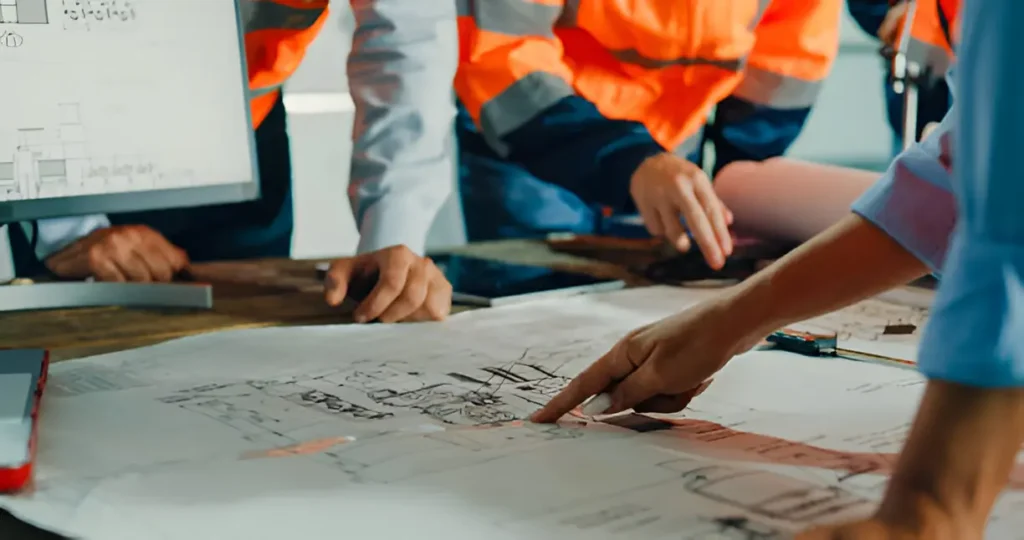Introduction
Successfully bringing an architectural vision to life is a journey defined by collaboration, expertise, and precise planning. The architectural design process is thoughtfully structured to guide both clients and professionals from the birth of an idea through the reality of a finished building. Engaging experienced teams, such as Aspen architects, can ensure this process moves seamlessly, balancing creative goals with technical demands to create enduring and inspiring spaces.
Understanding each phase of the architectural process provides transparency, builds trust, and promotes active participation for anyone considering a new construction or renovation project. Below, we explore each pivotal step, highlighting how intentional design and strategic decisions combine to transform abstract concepts into functional realities.
Pre-Design Phase
Establishing Project Foundations
Every successful project begins with defining its purpose and scope. The pre-design phase, also known as programming, involves deep discussions between the architect and the client to clarify objectives, priorities, lifestyle needs, regulatory requirements, and overall vision. Site selection and analysis are crucial at this stage; factors such as orientation, climate, zoning restrictions, and infrastructure are meticulously assessed to maximize opportunities and mitigate challenges.
Deliverables at this stage typically include a comprehensive project brief. Feasibility studies examine physical, financial, and legislative constraints. Early budget estimates and timeline projections are also developed, empowering stakeholders to make informed decisions before moving forward.
Schematic Design
Transforming Ideas into Visual Concepts
With a defined brief and site analysis in hand, architects create preliminary sketches and diagrams that capture the essence of the design. Creativity flourishes in the schematic phase, where conceptual layouts, massing models, and initial material explorations emerge, illustrating the relationship between spaces, circulation patterns, and overall form.
Throughout this stage, feedback loops with the client encourage collaborative exploration and course correction. By iterating on these early concepts, the project direction is refined while remaining open to innovative solutions that align with the vision and budget.
Design Development
Detailing and Integration
Moving beyond broad strokes, the design development phase introduces a higher level of specificity. Architectural decisions are honed, including material selections, structural elements, and mechanical, electrical, and plumbing (MEP) systems integration. Renderings and more technical drawings bring the evolving design to life, while engineering consultations ensure feasibility and performance standards.
Detailed documentation—floor plans, elevations, and sections—enables builders and consultants to visualize the project in depth. Specifications are crafted for finishes, fixtures, and building envelope systems, providing a robust framework for the next phase.
Construction Documents
Blueprints for Realization
Precision defines the construction documents phase. Architects assemble a complete set of drawings and technical specifications that contractors will use to price, schedule, and build the project. These documents address every aspect of construction, from structural supports and window types to energy performance and safety compliance.
The clarity and accuracy of these documents play a pivotal role in minimizing on-site errors, streamlining permit approvals, and ensuring the project’s built outcome aligns faithfully with the design intent.
Bidding and Negotiation
Selecting the Right Builder Partner
Once construction documents are finalized, the project is put out for tender. Qualified contractors review the details and submit competitive bids. The client, often with the architect’s guidance, assesses proposals based on cost, experience, proposed methods, and timeline. Transparent negotiation and due diligence help mitigate risk and ensure alignment with both budget and quality standards.
The outcome is a signed contract with a builder vetted for skill, reliability, and a clear understanding of the project’s objectives.
Construction Administration
Oversight and Communication
As the project transitions from paper to physical form, the architect assumes a critical role in construction administration. Site visits, coordination meetings, and review of submittals ensure construction progresses according to plans and specifications. Architects also facilitate the resolution of unforeseen challenges, provide clarifications, and manage changes in scope.
Effective construction oversight safeguards the project’s design integrity, quality assurance, and timely delivery, while maintaining open communication channels between the owner, builder, and consultants.
Post-Construction Evaluation
Review, Feedback, and Continuing Value
Upon completion, the building undergoes a final walk-through and review. The post-construction phase involves punch lists for minor adjustments, performance assessments, and delivery of operations manuals and warranty information. Architects may also solicit client feedback to assess satisfaction and identify opportunities for future improvement.
This concluding step confirms that the project meets its intended goals and provides valuable learning for future design endeavors.
Conclusion
The architectural design process is a journey of refinement and realization, where vision, expertise, and diligent planning converge to create meaningful built environments. Each phase is interdependent, contributing to the project’s integrity, utility, and longevity. By embracing this comprehensive pathway and partnering with skilled professionals, clients can confidently navigate from the spark of inspiration to the reality of a finished building that stands the test of time.
Also Read-The Strategic Role of Talent Acquisition: Building Workforce Strength from the Ground Up
